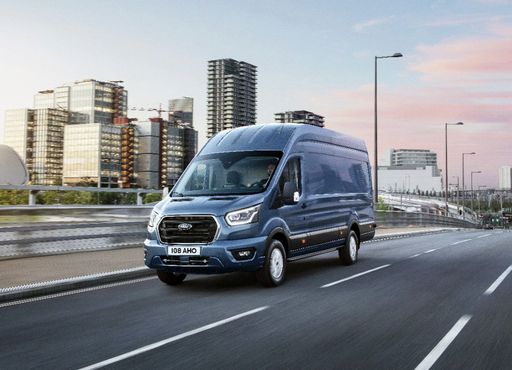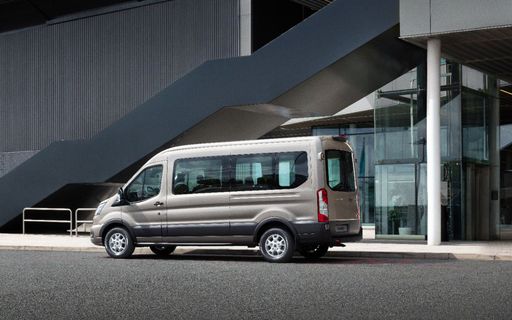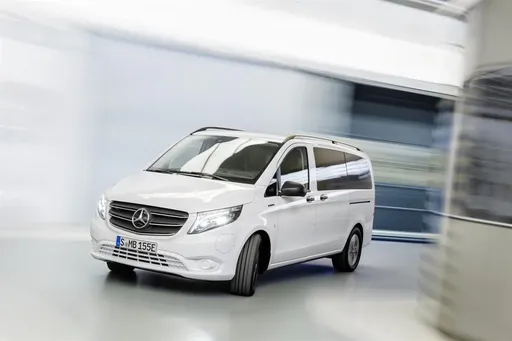Ford Transit Transporter vs Mercedes Vito Bus – Performance, range & efficiency compared
Two cars, one duel: Ford Transit Transporter meets Mercedes Vito Bus.
Which one wins in performance, efficiency and value for money? Find out now!
Costs and Efficiency:
Price and efficiency are key factors when choosing a car – and this is often where the real differences emerge.
Mercedes Vito Bus has a minimal advantage in terms of price – it starts at 36300 £, while the Ford Transit Transporter costs 39900 £. That’s a price difference of around 3603 £.
Fuel consumption also shows a difference: Mercedes Vito Bus manages with 6.70 L and is therefore somewhat more efficient than the Ford Transit Transporter with 7.90 L. The difference is about 1.20 L per 100 km.
In terms of energy consumption, the advantage goes to the Ford Transit Transporter: with 21.30 kWh per 100 km, it’s distinct more efficient than the Mercedes Vito Bus with 26.70 kWh. That’s a difference of about 5.40 kWh.
As for range, the Mercedes Vito Bus performs somewhat better – achieving up to 370 km, about 53 km more than the Ford Transit Transporter.
Engine and Performance:
Power, torque and acceleration are the classic benchmarks for car enthusiasts – and here, some clear differences start to show.
When it comes to engine power, the Ford Transit Transporter has a slightly edge – offering 269 HP compared to 237 HP. That’s roughly 32 HP more horsepower.
In terms of top speed, the Mercedes Vito Bus performs a bit better – reaching 140 km/h, while the Ford Transit Transporter tops out at 120 km/h. The difference is around 20 km/h.
There’s also a difference in torque: Mercedes Vito Bus pulls somewhat stronger with 500 Nm compared to 430 Nm. That’s about 70 Nm difference.
Space and Everyday Use:
Beyond pure performance, interior space and usability matter most in daily life. This is where you see which car is more practical and versatile.
Seats: Mercedes Vito Bus offers clearly perceptible more seating capacity – 8 vs 6.
In curb weight, Mercedes Vito Bus is barely noticeable lighter – 2023 kg compared to 2074 kg. The difference is around 51 kg.
In maximum load capacity, the Ford Transit Transporter performs clearly better – up to 14100 L, which is about 9110 L more than the Mercedes Vito Bus.
When it comes to payload, Ford Transit Transporter decisively takes the win – 2607 kg compared to 1077 kg. That’s a difference of about 1530 kg.
Who comes out on top?
Overall, the Ford Transit Transporter shows itself to be secures victory with a clear margin and secures the title of DriveDuel Champion.
It convinces with the more balanced overall package and proves to be the more versatile choice for everyday use.

Ford Transit Transporter
Ford Transit Transporter
The Ford Transit Transporter has long been a staple in the commercial vehicle sector, renowned for its reliability and versatility. It offers a comfortable cabin with a modern design that enhances the driving experience, making long journeys more enjoyable. With a focus on practicality, the Transit provides ample cargo space, meeting the demands of businesses and individual users alike.
details @ media.ford.com
@ media.ford.com
 @ media.ford.com
@ media.ford.com
 @ media.ford.com
@ media.ford.com
Mercedes Vito Bus
The Mercedes-Benz Vito Bus offers a versatile solution for those in need of spacious and comfortable group transportation. Its refined interior is designed to enhance passenger comfort, making it ideal for both business and leisure travel. With a focus on safety and efficiency, it provides a reliable driving experience that aligns with the high standards expected of the Mercedes-Benz brand.
details

|

|
|
|
|
Costs and Consumption |
|
|---|---|
|
Price
39900 - 69100 £
|
Price
36300 - 55900 £
|
|
Consumption L/100km
7.9 - 10.3 L
|
Consumption L/100km
6.7 - 10 L
|
|
Consumption kWh/100km
21.3 - 32 kWh
|
Consumption kWh/100km
26.7 - 26.9 kWh
|
|
Electric Range
247 - 317 km
|
Electric Range
248 - 370 km
|
|
Battery Capacity
68 kWh
|
Battery Capacity
60 - 90 kWh
|
|
co2
0 - 270 g/km
|
co2
0 - 228 g/km
|
|
Fuel tank capacity
70 L
|
Fuel tank capacity
57 - 70 L
|
Dimensions and Body |
|
|---|---|
|
Body Type
Cargo Van
|
Body Type
Bus
|
|
Seats
3 - 6
|
Seats
8
|
|
Doors
4
|
Doors
4
|
|
Curb weight
2074 - 2765 kg
|
Curb weight
2023 - 2739 kg
|
|
Trunk capacity
-
|
Trunk capacity
580 - 1390 L
|
|
Length
5531 - 6704 mm
|
Length
4895 - 5370 mm
|
|
Width
2059 mm
|
Width
1928 mm
|
|
Height
2530 - 2778 mm
|
Height
1890 mm
|
|
Max trunk capacity
9300 - 14100 L
|
Max trunk capacity
4190 - 4990 L
|
|
Payload
735 - 2607 kg
|
Payload
726 - 1077 kg
|
Engine and Performance |
|
|---|---|
|
Engine Type
Diesel, Electric
|
Engine Type
Diesel, Electric, Petrol
|
|
Transmission
Manuel, Automatic
|
Transmission
Automatic
|
|
Transmission Detail
Manual Gearbox, Automatic Gearbox, Reduction Gearbox
|
Transmission Detail
Automatic Gearbox, Reduction Gearbox
|
|
Drive Type
Front-Wheel Drive, Rear-Wheel Drive, All-Wheel Drive
|
Drive Type
Rear-Wheel Drive, All-Wheel Drive, Front-Wheel Drive
|
|
Power HP
105 - 269 HP
|
Power HP
136 - 237 HP
|
|
Acceleration 0-100km/h
-
|
Acceleration 0-100km/h
-
|
|
Max Speed
120 km/h
|
Max Speed
140 km/h
|
|
Torque
310 - 430 Nm
|
Torque
330 - 500 Nm
|
|
Number of Cylinders
4
|
Number of Cylinders
4
|
|
Power kW
77 - 198 kW
|
Power kW
100 - 174 kW
|
|
Engine capacity
1996 cm3
|
Engine capacity
1950 - 1999 cm3
|
General |
|
|---|---|
|
Model Year
2019 - 2024
|
Model Year
2024
|
|
CO2 Efficiency Class
G, A
|
CO2 Efficiency Class
G, A
|
|
Brand
Ford
|
Brand
Mercedes-Benz
|
What drivetrain options does the Ford Transit Transporter have?
Available configurations include Front-Wheel Drive, Rear-Wheel Drive or All-Wheel Drive.
The prices and data displayed are estimates based on German list prices and may vary by country. This information is not legally binding.
